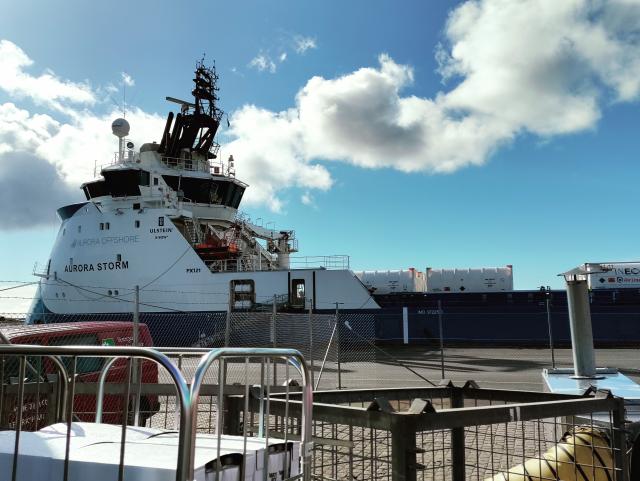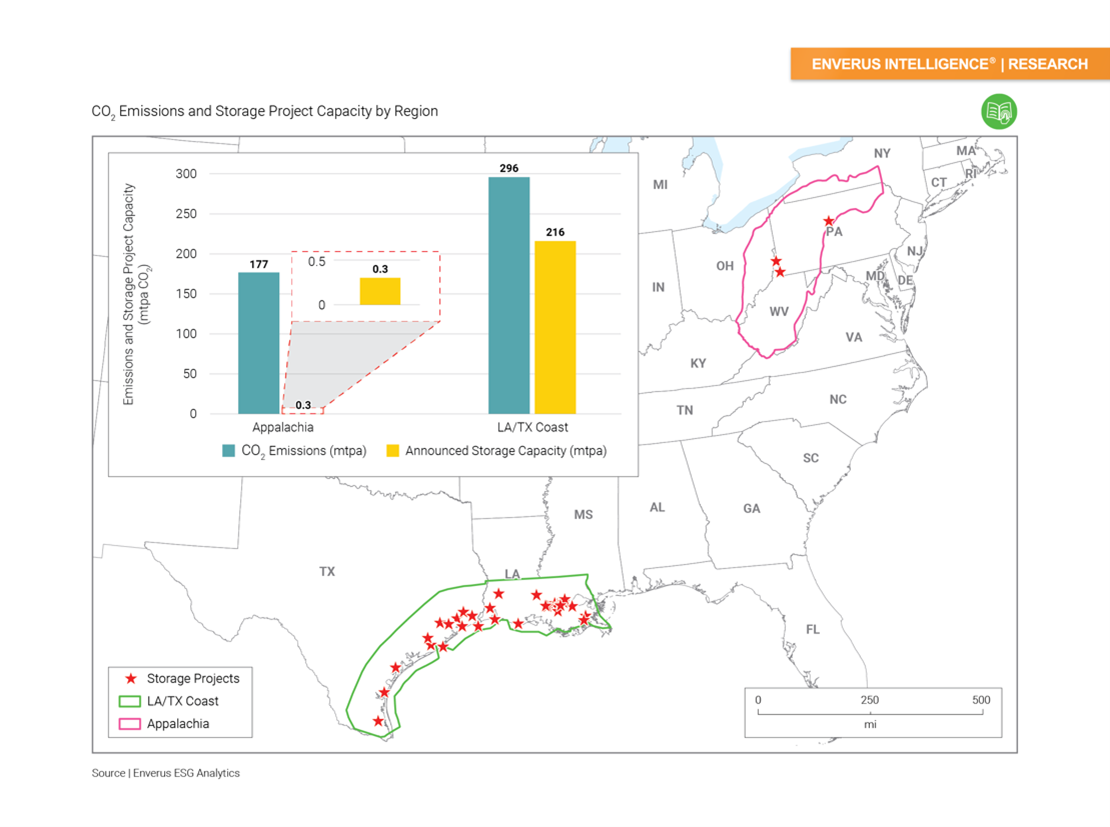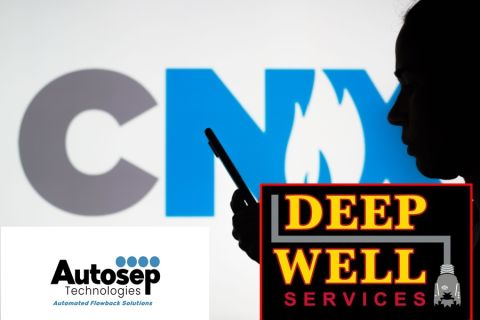
The Aura Storm vessel used to support the European Commission's Project Greensand carbon-sequestration initiative. (Source: Hart Energy)
The view from abroad, near and far, is that the U.S. is setting the pace in carbon capture and sequestration (CCS) and other nations are scrambling to catch up.
The Canadian government stressed the importance of investing in CCS in its new budget plan released, on March 30, and committed new investment tax credits to that effort. At the inauguration of a North Sea sequestration pilot project early in March, European political and business leaders also expressed concern about losing ground to the U.S. in CCS technology and investment.
The 2022 U.S. Inflation Reduction Act (IRA) and 2021’s Bipartisan Infrastructure Law “will turbocharge investment and development of CCS,” said Hugo Dijkgraaf, chief technology officer and member of the board of Wintershall Dea, the large German oil and gas company. “Capital will find its returns, and European governments will have to put in place incentives.”
Wintershall, together with global energy and petrochemicals company Ineos Group, lead the two dozen partners in the Project Greensand carbon-sequestration initiative in the North Sea.
At the inauguration of Greensand, European Commission President Ursula von der Leyden told delegates that a newly proposed “green industry plan” would accelerate permitting and support research and development through an innovation fund of EU$2.8 billion [US$3 billion]. A comprehensive CCS report is expected later this year, she said.

Canadian commitments
One specific point of emphasis for the fiscal year 2023 Canadian budget is enhancing the CCS investment tax credit.
In an interview, the head of North America’s largest midstream company, Enbridge CEO Greg Ebel, told Hart Energy the Calgary-based pipeline giant sees better incentives for U.S. projects. The Canadian government is making headway, but is not quite there yet, he said.
“I think there’s still some work to be done there, but we’re very positive on it,” Ebel said. “The Canadian element needs some more incentives to make it economically practical. It’s competing against those opportunities in the United States, which, quite frankly, have a better structure at this point in time.”
Enbridge recently teamed up with Occidental Petroleum Corp. to develop a carbon capture sequestration hub in Texas in the Corpus Christi area. In Canada, west of Edmonton, Enbridge is developing the Open Access Wabamun Carbon Hub with partners.
In the federal 2022 budget, the Canadian government announced design details of the tax credit.
The government’s 2023 budget proposes that the investment tax credit include dual-use heat and/or power equipment and water-use equipment, with tax support prorated in proportion to the use of energy or material in the CCS process.
Overall, the proposed changes are expected to cost about CA$520 million (US$385 million) over five years, beginning in 2023 and 2024.
Notably, the 2023 budget stated that “in addition to [the provinces of] Saskatchewan and Alberta, [the tax credits should] be available to projects that would store CO2 using dedicated geological storage in British Columbia.”
Provincial authorities in more politically conservative Alberta — home to the bulk of Canada’s hydrocarbon industry — have been critical of federal CCS initiatives they feel may be detrimental to oil and gas.
There also is production in British Columbia, especially from the Montney Formation, but by and large, the province has resisted industry expansion, especially new or expanded pipelines. Nevertheless, the country’s first LNG export terminal is well under construction at Kitimat.
The federal budget also contains some new specifications for CCS development. For example, it would “require projects storing CO2 in concrete to have their process validated by a third-party based on an ISO [internationally recognized] standard prior to claiming the investment tax credit.” The provision includes a recovery calculation for the investment tax credits for refurbishment property.
The government stated that it intends to apply labor requirements to the investment tax credit for CCS effective Oct. 1, 2023, according to the budget proposal. Once approved, the tax credit will be retroactively available to businesses that have incurred eligible CCS expenses, retroactive to 2022.
Investment will follow incentives
In February, Ineos acquired a $1.4 billion position in Texas’ Eagle Ford Shale from Chesapeake Energy.
“We were clear in our entry to the U.S. that, as part of the energy transition, we would have to compete in CCS and hydrogen,” said Ineos Chairman Brian Givalry. “Neither of those is, strictly speaking, economical today. But entrepreneurial investment will follow economic incentives. Local business does not set priorities, governments do. But, if the framework is set, then investment will follow.”
Givalry also stressed that the 2015 “Paris Accords did not say to turn off hydrocarbon energy and turn on green energy.”
“That would not be realistic,” he said. “About 85 million people arrive on this planet every year. That is roughly the population of Germany. That 85 million people cannot be supported by green energy alone.”
Returning to the business focus, Givalry noted dryly that “none of us are charitable organizations. We have chosen to participate in Greensands and other CCS initiatives for hard business reasons. Carbon capture and sequestration is essential for the continued use of hydrocarbon fuels.”
The Greensand project captures CO2 at the Ineos petrochemical complex in Antwerp, Belgium. It is compressed and loaded into tank containers that are taken by ship to the injection site, a former hydrocarbon production platform in the North Sea. It is notable as the first cross-border shipment of CO2 for sequestration. Other nations and the EU are revising regulations and legislation to allow for more international moves.
U.S. CCS challenges remain
Even as other countries enhance their own CCS efforts, development in the U.S. varies greatly by region, as highlighted by a report released in mid-March by Enverus Intelligence Research. Noting that the IRA has brought renewed attention to carbon capture technology, Enverus cautioned, “not all sub-surface basins are created equal.”
For instance, CCS is considered challenging in the gassy Appalachia region.
“Our current view is that CO2 storage potential in Appalachia is very limited as the underlying reservoirs are thin with low porosity and permeability,” said Brad Johnston, a senior geology associate with Enverus, and author of the report. “The Appalachia region accounts for about 8% of U.S. CO2 emissions, but lacks any significant storage projects.”
That raises the question, “Where are they going to put all of the CO2 up there to keep up with emission-reduction targets and their potential blue hydrogen hub?” Johnston said.
Enverus “believes CCS is currently uneconomical in the Oriskany Sandstone in Appalachia,” the report stated. “Low porosity and thickness contribute to storage breakevens nearly 170 times higher than the Louisiana Oligocene-Miocene sands at the midpoint.
“A higher price of carbon or technology-driven cost reductions are required to warrant CCS activity in the Oriskany.”
The report concluded that Enverus struggled to “justify the economics of retrofitting power plants for CCS or for the proposed Decarbonization Network of Appalachia hydrogen hub in the region. With low-modeled injection volumes, hub-scale or large, single-emitter sequestration projects will be difficult.”
Recommended Reading
Deep Well Services, CNX Launch JV AutoSep Technologies
2024-04-25 - AutoSep Technologies, a joint venture between Deep Well Services and CNX Resources, will provide automated conventional flowback operations to the oil and gas industry.
EQT Sees Clear Path to $5B in Potential Divestments
2024-04-24 - EQT Corp. executives said that an April deal with Equinor has been a catalyst for talks with potential buyers as the company looks to shed debt for its Equitrans Midstream acquisition.
Matador Hoards Dry Powder for Potential M&A, Adds Delaware Acreage
2024-04-24 - Delaware-focused E&P Matador Resources is growing oil production, expanding midstream capacity, keeping debt low and hunting for M&A opportunities.
TotalEnergies, Vanguard Renewables Form RNG JV in US
2024-04-24 - Total Energies and Vanguard Renewable’s equally owned joint venture initially aims to advance 10 RNG projects into construction during the next 12 months.
Ithaca Energy to Buy Eni's UK Assets in $938MM North Sea Deal
2024-04-23 - Eni, one of Italy's biggest energy companies, will transfer its U.K. business in exchange for 38.5% of Ithaca's share capital, while the existing Ithaca Energy shareholders will own the remaining 61.5% of the combined group.




